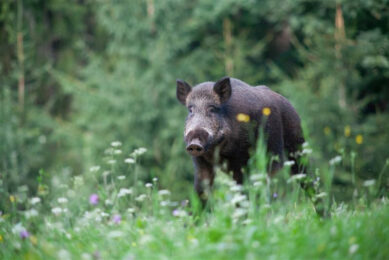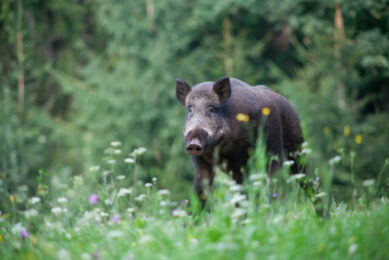Salmonella food poisoning – more good news for the pig industry?
Salmonella species are the second most common cause of food poisoning in man after Campylobacter spp, affecting over 13,400 people in the UK each year, but the latest report on Salmonella in Livestock Production in Great Britain (VLA, 2007) shows that only a small fraction (<1.8%) of human infections can be associated with pig isolates.
Salmonella species are the second most common cause of food poisoning in man after Campylobacter spp, affecting over 13,400 people in the UK each year, but the latest report on Salmonella in Livestock Production in Great Britain (VLA, 2007) shows that only a small fraction (<1.8%) of human infections can be associated with pig isolates.
Salmonella species are the second most common cause of food poisoning in man after Campylobacter spp, affecting over 13,400 people in the UK each year, but the latest report on Salmonella in Livestock Production in Great Britain (VLA, 2007) shows that only a small fraction of human infections can be associated with pig isolates.
The top five species of Salmonella found in human cases are S. Enteritidis, S. Typhimurium, S. Virchow, S. Newport and S. Infantis (see Figure 1).
Figure 1. Most common Salmonella serotypes found in man in GB (2006).
 |
S. enteritidis
S. Enteritidis is primarily associated with chickens, both meat and eggs, although the UK has dramatically reduced the incidence of this infection in its flocks through vaccination, and it may be associated more with imported products and infections picked up while travelling abroad.
In pigs, S. Typhimurium is the most common species (66.2%) of isolates and therefore pigs are frequently blamed for this particular infection in man.
S. derby
The second most common Salmonella infection in pigs is S. Derby (13.9%), and this species does not appear in the top 10 human list, so is as below 0.7% of infections. In simple proportional terms, one would expect, therefore, S. Typhimurium from pigs to account for below 3.3% of human cases, which is a surprisingly small level.
S. Typhimurium is found in all animal and avian species but if we look at the different definitive types of S. Typhimurium, we can make a further assessment (see Figure 2).
Figure 2. Top ten definitive types (DT) of S. typhimurium found in man and animals.
 |
Responsible
If pigs were responsible for all of the human DT104, DT193 and DTU302 cases it would add up to 3.58% of all of the human cases. If we assumed that they were responsible for only one third of the DT104, as poultry and cattle also have a strong involvement, but assume that pigs are mainly responsible for DT193 and DTU302, then the number of human cases that is attributable to pigs can be calculated as 1.84% or below.
As England is considered one of the ‘dirty’ countries of Europe, as far as Salmonella in pigs is concerned, according to our meat juice ELISA test results, it is possibly surprising that the figure is so low.
Penalise
Possibly, legislators should take this into account and not penalise pig producers but focus their attentions and resources more on the areas where it can make a major difference.
One other snippet of good news was that none of the pig isolates were resistant to ciprofloxacin (fluoroquinolone), cefotaxime or ceftazidime (cephalosporins) and amikacin (aminoglycoside), considered critically important antimicrobials for human use.











